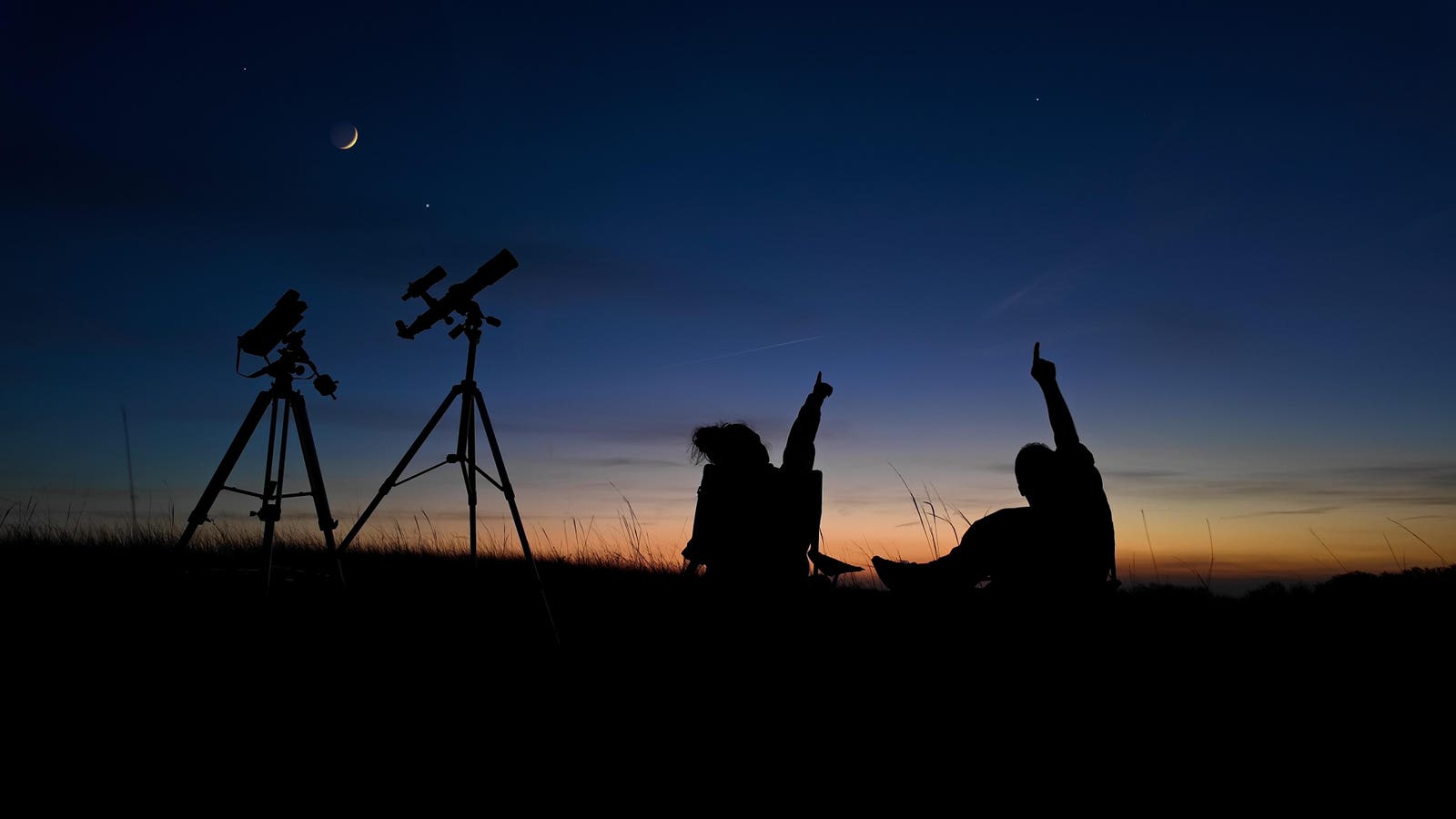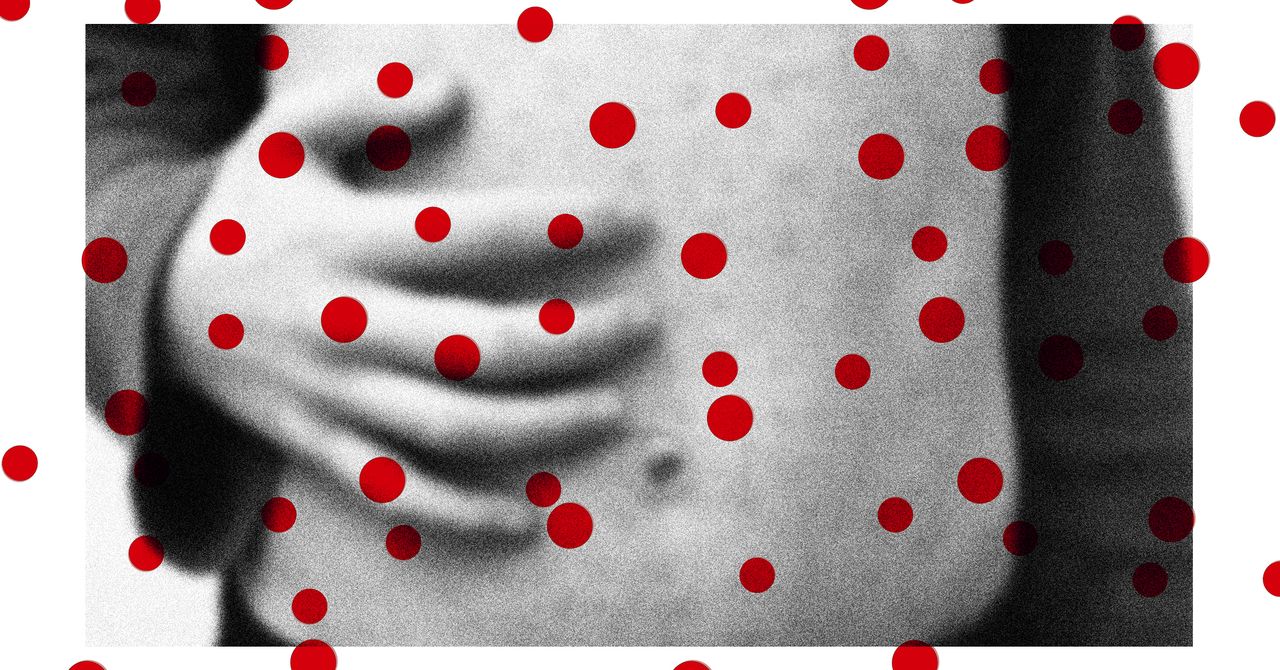Topline
The “planet parade” — mistakenly being called an alignment by many — continues on Monday, Aug. 18, with four planets visible to the naked eye an hour before sunrise. Uranus and Neptune will also be in the sky, making six planets in total, but neither of the gas giants will be visible to the naked eye. It’s the rise of Mercury this week that effectively creates the “planet parade,” although arguably, it’s the presence of a beautiful waning crescent moon that makes the sight worth getting up early for.
From Aug. 17–21, a spectacular “planet parade” (also called an alignment) features the moon and six planets.
getty
Key Facts
A 26%-lit waning crescent moon will shine high above Jupiter and Venus in the eastern sky about an hour before sunrise.
Venus will be the brightest planet, with Jupiter just above it, the next brightest. Above these two planets will be the crescent moon, while below will be Mercury, which will be easiest to see closer to sunrise.
Saturn, visible in the southern sky, is now close to its annual bright “opposition” on Sept. 21, when Earth will be between Saturn and the sun. As a consequence, it will be at its biggest, brightest and best.
If you plan to rise early this week once to view the “planet parade,” go for Wednesday, Aug. 20, when a slim crescent moon will be very close to Venus — a beautiful sight.
It’s over three years until the next impressive “planet parade,” when in October 2028, five planets will be visible together again before sunrise.
Monday, August 18: ‘Planet Parade’ And A Crescent Moon
Stellarium
What’s Next In The ‘planet Parade’
On Tuesday, Aug. 19, the waning crescent moon will have sunk a little lower in the sky and be approaching Jupiter and Venus. At 16%-lit, it will begin to display “Earthshine” — sunlight reflected onto the lunar surface by Earth’s ice caps, oceans and clouds. Although it depends on where you watch from, Mercury will be at its apparent farthest from the sun on Tuesday, Aug. 19, so it will be one of the best mornings to see the “Swift Planet,” which orbits the sun in just 88 days and is mostly lost in its glare from Earth’s point of view. However, arguably, the highlight of the “planet parade” this week will come on Wednesday, Aug. 20, when a 9%-lit crescent moon will appear very close to Venus.
The Orion constellation rises over a hill through high thin clouds near Black Mesa, Oklahoma.
getty
The Stars Of Orion
Skywatchers gazing at the “planet parade” will likely notice some familiar stars on the right-hand side of Venus, Jupiter and the moon. One of the most iconic and easily recognizable of all the winter constellations in the Northern Hemisphere, Orion is visible right now before sunrise because the sun recently passed through that part of the sky in May and June. The most obvious shape is Orion’s Belt — three stars (Alnitak, Alnilam and Mintaka) in a straight line —with red giant Betelgeuse roughly between the belt stars and Jupiter. On the other side of the belt star is the bright blueish star Rigel. If you stay up long enough to see Mercury rising, look to the right for Sirius, the brightest star in the night sky. The stars of Orion’s Belt will point directly at it as it appears on the eastern horizon close to sunrise.
What’s Next In The Night Sky
Mercury will gradually disappear from the pre-dawn sky as it continues its speedy journey around the sun, leaving Saturn, Jupiter and Venus as the only planets visible to the naked eye. Skywatching highlights in September include Saturn at its biggest, brightest and best as it reaches its annual “opposition” on Sept. 21, a total lunar eclipse on Sept. 7 for those in Asia, Africa and western Australia, a stunning view of a waning crescent moon, Venus and bright star Regulus on Sept. 19, and a partial solar eclipse on Sept. 21 for the Pacific Ocean.
Further Reading








